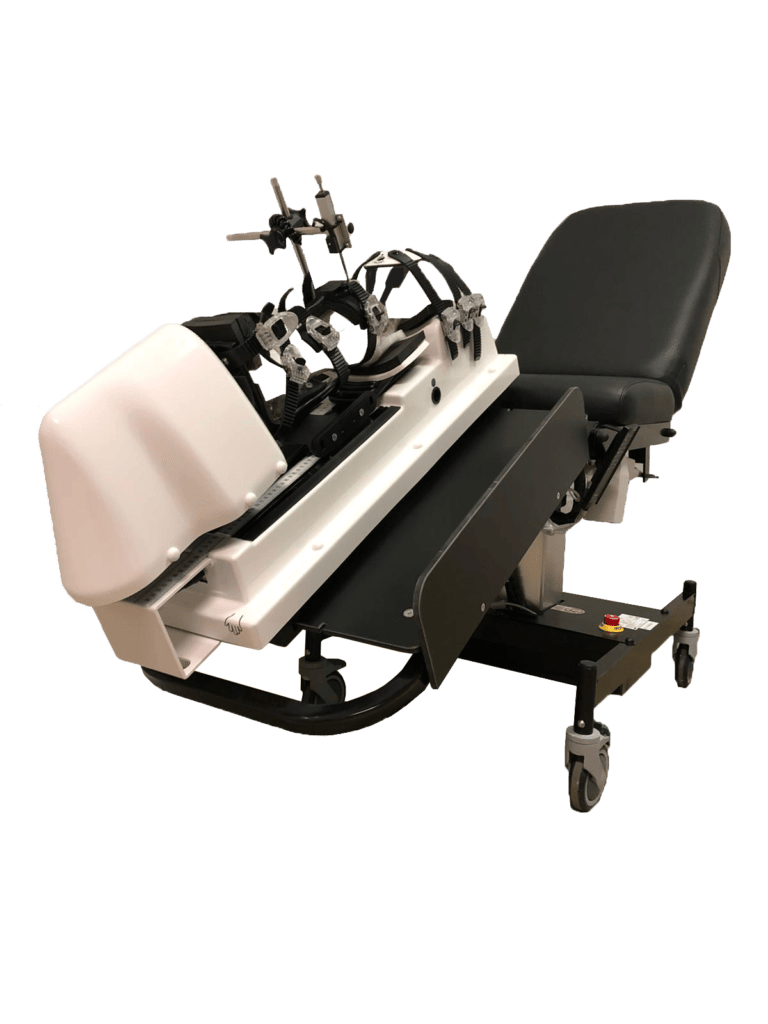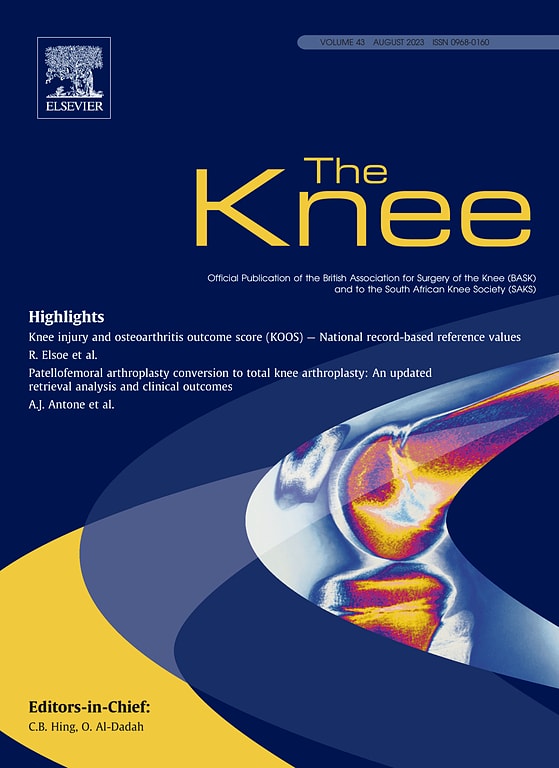Welcome to Arthrometer.com. Your knee health is our top priority. The Anterior Cruciate Ligament (ACL) is key to knee stability but is vulnerable to injuries that can impact your mobility and quality of life. Recognizing the signs of an ACL tear early can lead to more effective management and recovery. Here, we detail seven ACL self-assessment tests to help identify potential ACL injuries. Remember, these tests are initial steps and should not replace a professional medical evaluation.
Introduction to ACL and Its Importance
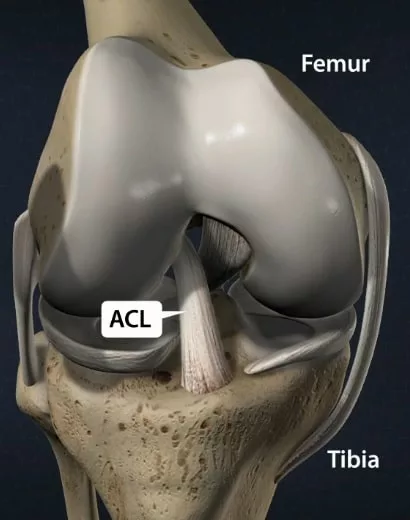
The ACL connects your thigh bone (Femur) to your shinbone (Tibia), playing a critical role in knee stability. Despite its small size, it prevents excessive forward movement of the shinbone and maintains knee alignment during movement. Understanding this ligament’s function helps in identifying when things go wrong.
7 ACL Self-Assessment Tests
The Audible Pop Test:
- Purpose: To identify the signature sound of an ACL tear.
- Method: Gently bend and straighten your knee, listening for any popping sound, which could indicate a tear.
Visual Comparison Test:
- Purpose: To spot visible anomalies in knee structure.
- Method: Compare both knees side by side. A misaligned kneecap on the injured knee might suggest an ACL injury.
Mobility Test:
- Purpose: To assess the knee’s support and stability.
- Method: Attempt to walk normally. Difficulty or instability may indicate an ACL injury.
Swelling Observation:
- Purpose: Swelling is a common response to an ACL injury.
- Method: Check for swelling or bruising around the knee, as this is a typical reaction to an injury.
Pain Assessment:
- Purpose: To evaluate discomfort levels, which vary widely with ACL injuries.
- Method: Note any pain around the knee, especially when touching the area.
Range of Motion Test:
- Purpose: To gauge knee flexibility post-injury.
- Method: Attempt to bend and straighten your knee, noting any limitations or discomfort.
Muscle Strength Test:
- Purpose: To check for muscle weakness resulting from an ACL tear.
- Method: Try to lift your leg or straighten it. Difficulty or pain can indicate an injury.
Understanding Arthrometers: A Leap Forward in ACL Diagnostics
Arthrometers, especially the DYNEELAX® / GNRB® device, represent a pivotal advancement in the precision diagnosis of ACL injuries, challenging the traditional reliance on MRI.
Recent research, notably the 2023 study by Théo Cojean et al., underscores the superiority of the GNRB® in detecting partial ACL ruptures compared to MRI, highlighting a significant leap in diagnostic accuracy.
This study, involving 214 patients, revealed that while MRI and DYNEELAX® / GNRB® showed comparable efficacy in identifying complete ACL tears and healthy ligaments, the DYNEELAX® / GNRB® outperformed MRI in the detection of partial tears. Specifically, the sensitivity for MRI in identifying partial ACL tears was markedly lower than that of the GNRB®, indicating a pivotal role for arthrometers in enhancing diagnostic precision where MRI may falter.
By integrating the dynamic, objective measurements of knee laxity provided by arthrometers with the detailed imaging from MRIs, healthcare professionals can achieve a comprehensive understanding of ACL injuries. This dual approach not only enriches the diagnostic process but also guides more informed therapeutic decisions, particularly in the nuanced management of partial ACL injuries.
Cost-Effective ACL Injury Diagnostics: The Role of Arthrometers
Arthrometers like DYNEELAX® and GNRB® provide an economical and efficient preliminary diagnostic tool for ACL injuries by measuring knee laxity, including anterior tibial translation and knee rotation. This approach not only offers significant cost savings compared to MRI but also enhances diagnostic accuracy, particularly for partial ACL tears and injuries to surrounding structures. While arthrometers don’t aim to replace MRI entirely, they serve as a vital first step, potentially avoiding unnecessary MRI scans when no lesion is detected.
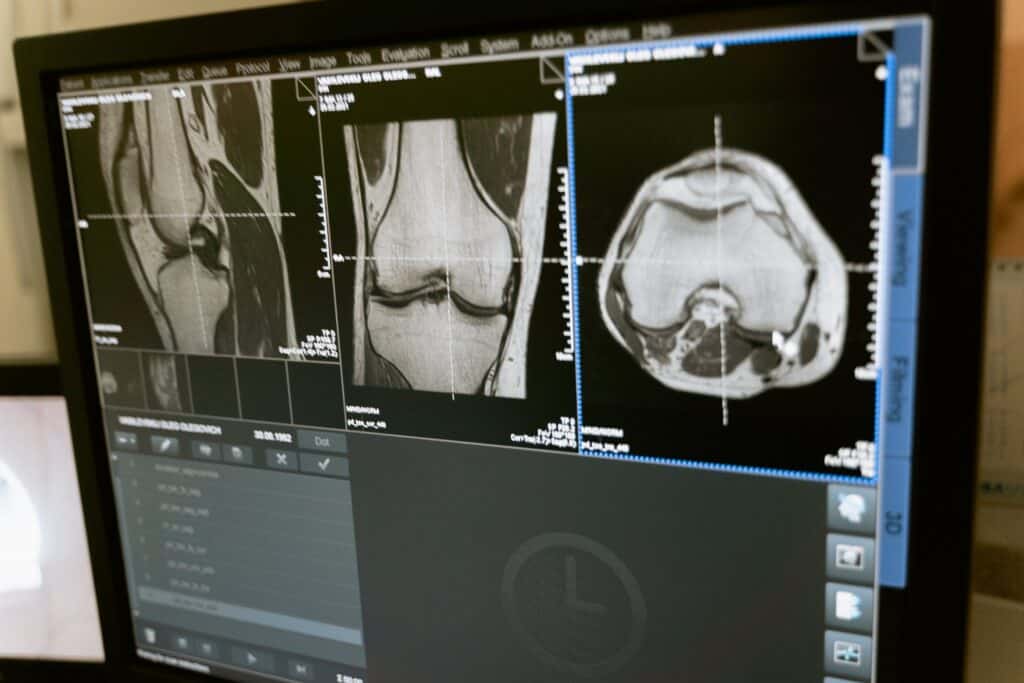
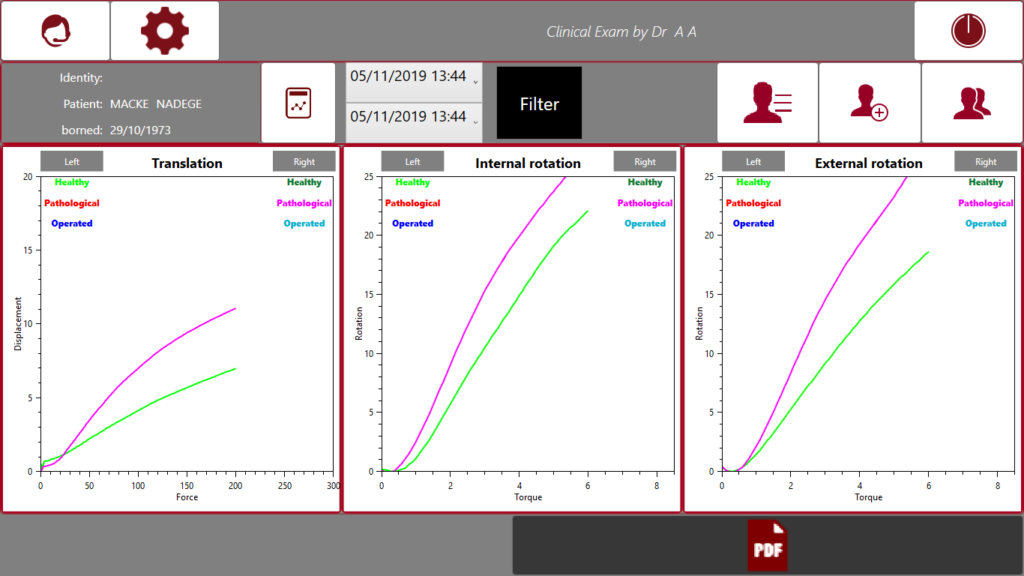
Medical References (Link In DOI)
- Cojean T, Batailler C, Robert H, Cheze L. (2023). GNRB® laximeter with magnetic resonance imaging in clinical practice for complete and partial anterior cruciate ligament tears detection: A prospective diagnostic study with arthroscopic validation on 214 patients. Knee, 42, 373-381. DOI: 10.1016/j.knee.2023.03.017

